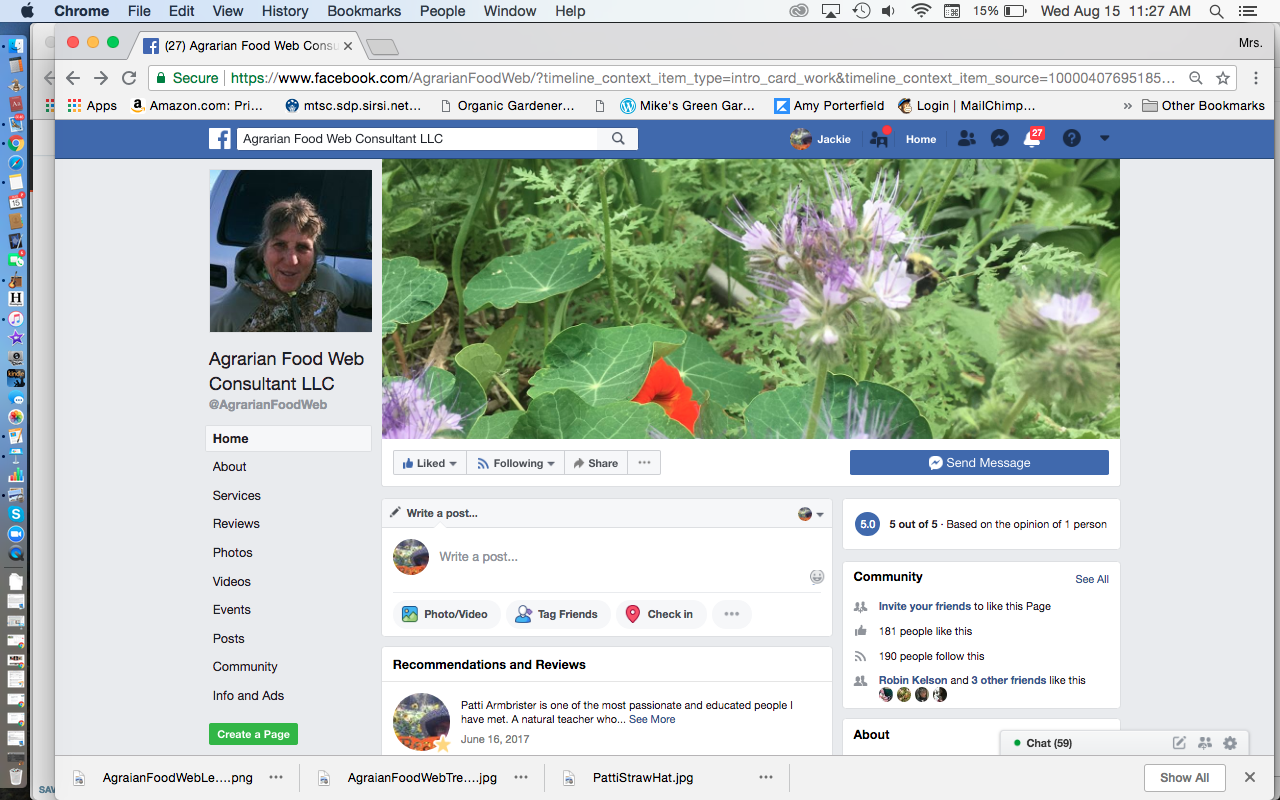244. Agrarian Food Web | Soil Health and Sunflowers | Patti “Amazing” Armbrister | Hinsdale, MT
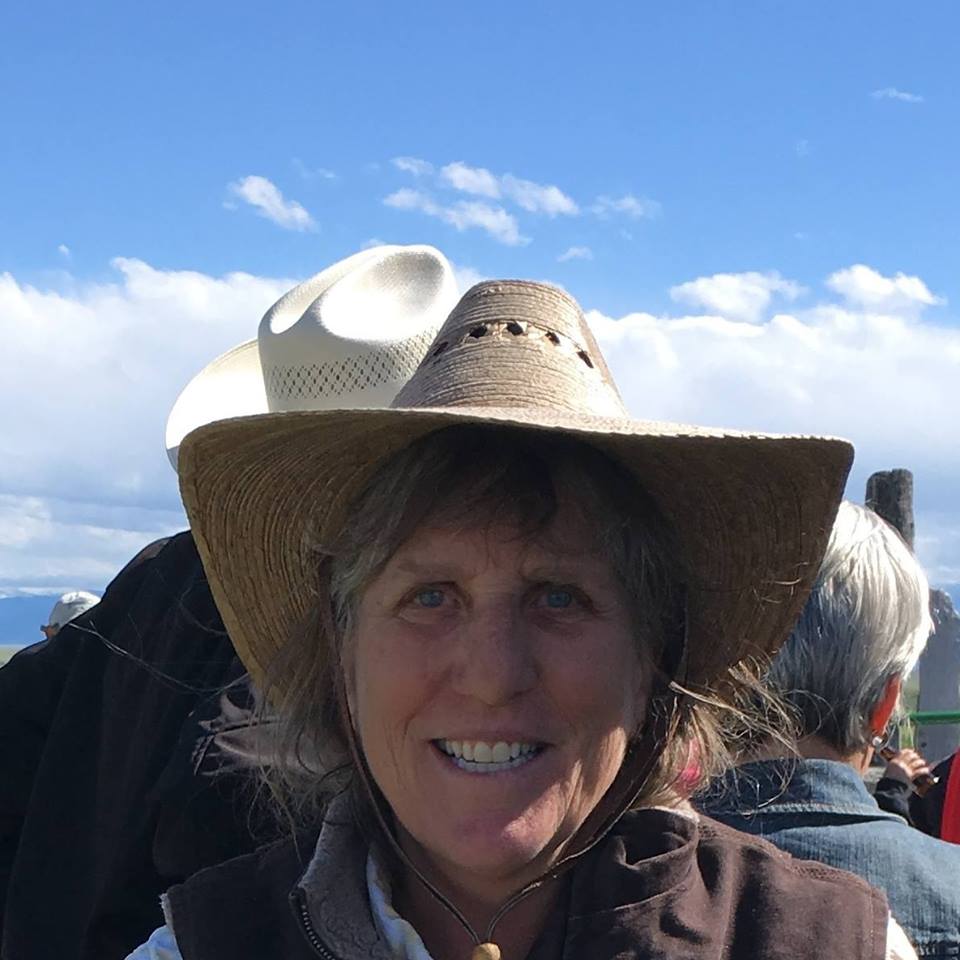
Connect with Patti Amazing Arbrister on Facebook at her Agrarian Food Web Page!
I’ve been wanting to see some podcasts on you know the organic gardeners when we talk about soil health and composting and the principals of cover crops
they just turn their lights off and don’t want ot talk because they are doing organic gardening and
every single farmer
including your household vegetable gardeners
they’re doing production organics
they’re on a fast pace to destroying their soils and don’t know it
finally on fb yesterday, the day before
one of my friends, she is a leader in organic gardening, she made a video on the same topic,
when I started hearing about soil health she didn’t think they were talking about her, when she realized the principles are about her
they have this mindset
they are above and beyond soil health
they are some of the ones the fastest
What are they doing? To ruin their soil.
These are the principles for regenerative farming or gardening
1. Minimum disturbance to low disturbance
- boar bottom plow
- shovel
- chisel
- roto tillers
use a broad fork
a real shallow device
That’s minimum disturbance
2. Keep the soil covered 24/7
365 other then the day you are going to pull the weed mulch
soil should be covered
so when you look at it you should either see
dead organic matter
wood mulch/chips that you’ve added or you should
see live plants
never see bare ground
next rule or principal
3. Plant diversity
more plant diversity
Companion planting
farming solar rays of sunlight that is coming to the earth
as those plants do photosynthesis then they are dropping root exudates ~ they leak them out of their root system for the
soil food web
Uses those sugar and carbohydrate
Then they deliver to the plant something the plant needed. They do this with signals depending on the root exudates.
Let’s say it’s a corn plant, it needs nitrogen. And next to it is a, tomato and a tomato needs calcium.
sending different signals
biology brings back different
nitrogen is getting created by protozoa, then eating the fungi then pooing it out
form of the bacteria fungi, attached to the roots
The plant couldn’t use it until it went through the stomach of the protozoa and it poops it out. Kind of like a seed….
so it could sprout
nutrients become available to the plant. The more plants and species of plants in that group the more sugars there is in the soil life and more diversity of the nutrients cycling around in the soil.
too good a job
too much calcium
sending the signal
tomato
- the corn
- peas
- beans
need it and it’s available to them too. So it’s like a sharing event taking place.
So the more diversity there is the healthier
Next rule or principle is to
4. keep a living root in the soil as many days out of the year
meaning if we’re gonna take out a crop
just got done with the spring
spinach or arugula
bed is empty now,
as soon it is done I chop them down and they become part of the leaf litter
the next succession of plant
pepper into that spot
For the biology of the soil, there is always a living root there, always giving off root exudates. This exchange is always going and can go year round if we have a perennial plants in the system!
This is awesome!
There is another thing that happens with the root structures
A carrot is obviously a taproot, it has a singular taproot can break up hardpan
radish can break up the hardpan.
The hardpan is created by us
- walking on the ground
- driving an implement
- tractor in the farm gound
- train as it is going by my house
the train is 200 yards from my house, making the ground bounce and causing compaction
taproot breaks that compaction layer up
softer soil
worms will feed off that decaying root
make channels
just the tap root looks like it is just the tap root but it has a long long skinny root, but it’s several feet on the ground, then the worm able to go down the channel and burrow. Let’s say next to the plant is a carrot
fibrous
thousands of roots in a mat
hairroot
next to the carrot
root system is called biological tilling
- softening the soil
- ammending
and making it better from the soil from their root system.
carbon
decomposing
Some of the carbon is getting stored into the soil
versus one type of crop, if we are having a field of corn, we have one type of root in the soil
those are the principles
think about the principles
You’re an organic farmer who just prepared the seed bed
roto-tilled the bed.
dead organic matter
deep as your tines will go 4-5-6 inches deep
bottom half 6-inches deep
roots have to break thorough that in order to have a system of any kind going on
so they come down
root turns on the direct
across the hard pan turns on a angle because it is looking for nutrients and water but it can’t grow through it so they are fighting for the nutrients and water.
So what does someone who has a large acreage like 2 acres or 10 acres without a tractor?
You would use a tractor and then plant a cover crop. But you’re gonna cut it down or a roller.
lays it into a mat
then they go in with a no till drill, that has a disc, two little discs
opens a furrow
that drops seed in
roller that goes over that that has a way to pack it down.
seed soil compact
no-til planter
This is awesome! This is what a lot of Liz Carlisle’s book The Lentil Undergound is about right? If we know these are best practices why aren’t we doing it? and I was talking to Megan Cain the other day and she was saying she tries to put something in the same day she takes it out so she doesn’t have bare soil. That’s good advice for me because I am the worst at getting my seeds in the ground!
there’s another thing they call inner seeding
we could inner seed
- peas
- beans
- clover
In between the corn, so they are growing the whole time the corn is growing. We may not harvest them, like the clover, but we could harvest the beans or peas, we might be walking on some beans or peas
a lot of the inner cropping
the inner crop is just to help with fixing the nitrogen and keeping the roots cool
So you have a cooler soil, where it’s not getting dried out by the wind but not super cool
soil biology, creates some heat, so that soil temperature might not be major difference but it’s better then dry air exposed
baked
soil life
exposed tilled soil
if they are there they’re dormant, not doing anything
They have to have moisture
not over a 100º
doing their thing
Anytime we have exposed soil on the surface that’s expose to the air and wind
wind demonstration
traveling before some soil erosion
- white t-shirt
- plastic mat
- pan of top soil
- leaf blower to generate the wind with
With a mph reader
They said everybody start watching the t-shirt, it’s already running at 2-3 mph think we haven’t seen anything it, but you look down and the dirts all over the t-shirt….
so tiny
already moving
can’t see them by the human eye
if we can’t see we don’t conceive it, that it’s already happening. He had it go up to 20 mph, you could see the soil rolling and bumping, rolling and
on top of this little mph
20mph is a little wind. The other day we had in eastern Montana 90mph
you can’t even just stand, you’re just left with rocks
soil exposed
mulch
is on top of this soil
And it would also help like in the forests where they fires are burning to hold in the soil there too.
So those are the main principles are those five things
They have tried all the principals separate from each other, they do work to a certain extent, but if you put all five of them together
You get incredible responses!
You can turn soil that is almost on the verge of decertification and turn it into healthy soil in three years!
We can start whenever the person can wrap their head around starting
once we decide it doesn’t matter what time of year. Let’s say it’s fall,
You would normally go in and pull your tomatoes
I would never pull the root out of the ground, I might cut the plant off, but let it do it’s natural thing and let it catch snow and it will slowly break down into the system
as long as it isn’t diseased, if it’s diseased take it out.
first thing is
I try to catch people in the fall
you should maybe leave that. Once you recognize these principals it will save a lot of labor and time! And wonder we haven’t done it all this way all the time?
I never thought about that before, if you leave it there, what do you do in the spring?
That’s nature’s way is already starting to decompose it
We have the most decomposing going on right underneath the snow
decomposing already taking place with the moisture of the snow, it will be already breaking down
In the spring we hope you have some mulch left, a system in the spring…
A worm can take a whole leaf, and pull it down their den 3 foot deep. So a lot of that stuff is just going to disappear. You get into this.
I have a friend I her into this started this 3 years ago
third year of white dutch clover in the walkways
Already she is like I need to get more mulch
leaves in the fall. I told her in the future you want to be thinking about growing a cover crops to put in for the mulch.
- green living
- grass seed plants
- all winter
In certain areas, you would be able to cut it, and use that as a straw mulch. It will be green when you cut it and it will turn into something that looks like straw.
I was going to ask you about the clover. I guess I was just thinking is the bees like the clover. You also posted the pictures of her garden right?
put it
turns into
She has it between all of her beds, she mows it when it gets 4 inches tall,mows it late evening when the bees have already left
She mows the walkways and lets the leaf littler from the clipping go into the beds
- feeding the plants
- plant is stressed from the cutting
- releases nitrogen into the soil
- double dose of nitrogen every time she mows it.
they all tie together
100s if not 1000s of ways it could looks
everybody’s got a little bit different
night temps
When you go to place choosing regenerative ag practices they all look different because they all have something different to work with. Everyone has different goals.
my goal maybe to not have to do a lot of planting
reseed in place
produce seed and cut that and take it to a new place
I have different plants that I let go to maturity
Seeding
People say you shouldn’t let that go to seed, because it’s going to put down seed
lots of things
even parsley
go to full see put down 100s of plants
It might be better to cut the seed and take it where you want it instead of letting it just seed all in one place.
Can I do that with my oregano?
brassicas family
if it’s been pollinated by another plant in that family
doing it for
buy seed
don’t want to find out what nature did to the seed
need to have arugula when they need arugula.
families can cross
some squash can cross with others within the own family.
So it’s just a whole new to start learning, when you start going to seed
Robin Kelson would be the person to talk about those things?
You have been dropping a zillion golden seeds today.
People keep saying, chemcial ag people who are brainwashed by the industry, that we can not feed the world without these modern. But we could feed the world by doing regenerative agriculture.
If everyone started they would be growing nutritious
tasty
highly more nutritious
They have discovered the soil food web is the missing link as to why our nutrients have dropped out of the plants
The missing link
Like beef has dropped in iron! In like in 1/2 or more since the seventies.
That’s because the cows are eating hay and grain that is not nutritious.
Right, the plants aren’t nutritious enough that the animal is eating.
The same way with us, we say “Ok, we’re gonna eat spinach because we want to have the vitamins,” but if that spinach plant has been grown with phosphate fertilizer not doesn’t have to have any other chemicals around it, it just has phosphate. So it got all of the NPK it needed to live and do well and looked well and harvest on time, does everything right, but didn’t get the micronutrients because the soil food web wasn’t in the picture, they start disassociating with the plant!
The plant has evolved with the association of the leaking these exudates and having this exchange go on
npk
right in the root zone for the plant
I don’t need to have microphisarize associating with me.
I don’t need to send all those sugars to the won’t send them anymore, because I don’t need it, I’ve got all the NPK I need. So the microbes are like if you are not gonna feed me, then it’s more then likely it’s a
- weed
- grass plant
- weed or tree
That’s crazy we’re doing this on a mass scale with all of these monocrops! which is what we feed our animals.
This same thing is going on
- playgrounds
- schools
- golf courses
- lawns
throughout a America
don’t have the soil food web in the picture
doing the nutrients
part of the water cycle too
These roots need to be deep and full of the root exudates for the soil food web
They are part of the water cycle, when we don’t have that
soil structure
soil gets glued around the roots from the exudates, that makes the glue, altogether, they make their own cities around the roots of the plant.
- holds moisture
- like a sponge in the soil
disassociated then the glue isn’t there, then we don’t have the sponges there
can’t hold the water
good way to know if we have soil healthy issues, is if we have a
- flood
- drought in the same year
We need soil health because we have destroyed our soils.
This is the case all over, we have huge floods
IDK how many floods in the last 12 years?
Now we’ve went through a major severe drought
In another month we will have floods in the spring and droughts by late summer! Because the soil can’t hold this water.
the water runs
It’s not that we need more rain, we need our soil to be able to hold the rain that we get!
I know I watch the news and the fires this morning and wonder why don’t people wake up? How much more needs to burn? When I was in NY at the beginning of the summer, Mike was sending me pictures of a town over by Helena, Augusta maybe where no one could leave for like out hours because of a flood.
Then they have had dust storms in lots of places
- Colorado
- North Dakotas
- Eastern Montana but no ones recording them!
The soil doesn’t have the glue.
When the soil aggregate has the glue in there they are not as likely to start blowing!
(As I write this, the news talks about floods from Texas to NJ – Monday, August 13, 2018
We need to do a lot of that here… we’re learning about a lot of that… we’ve been putting cover crops in too!)
key plants I love to have in a garden or cover
Phacelia and bees
https://www.facebook.com/kevin.elmy/videos/10217426301109093/UzpfSTEwMDAwNDA3Njk1MTg1MjoxNDk4MTI0NjgzNjY2NzQ5/
bee friend
bees love it
lavender bloom
It has like a bushel basket of roots, it might not look like much above the soil, but underneath it’s like the rockstar of soils.
I make sure I have in the system
I am getting ready to take out a bunch of my Kentucky blue grass lawn
put in native plant seed
I am getting ready to scattered on the ground a month or so ago
It’s a better time to plant these perennials. Just waiting to see if I can get a rain.
Phacelia
How I would remember that is it has ace in the middle….
When you look it up you will be like that is the coolest plant ever! Look at the bumble bees and the honeybees and sweat bees?
tiny micro bees that you’ve never seen in your life and think omgosh there’s a whole other world out there!
microscope
I can see the big stuff
- nematodes
- protozoa
- bacteria
- getting tiny
stuff moving back there
that’s micro tiny I’m gonna need my microscope to see that world
lots littler then what we’re normally looking at
there’s a bee
closer
Borage
It’s another plant that I make sure I have in the garden because it scavenges micronutrients.
deposits it’s leaf littler
put it in the compost
chop it and drop it in the compost or just chop where I need nutrients and then it will just compost into the ground by itself
Bees love it!
full
Johnny’s seed catalog has both of these.
lots of organic seed supply
edible
It tastes like cucumber
We eat the little flower, it looks like a star. You can eat the whole plant. It’s great as a
sprout
It’s a great detoxer
add
- green juice
- salad
- tastes cucumbery
fine hairs when it starts maturing
How do you eat it as a sprout?
It self seeds super easy, it sprouts super easy
sprouts from where it was the year before. You will need to thin it.


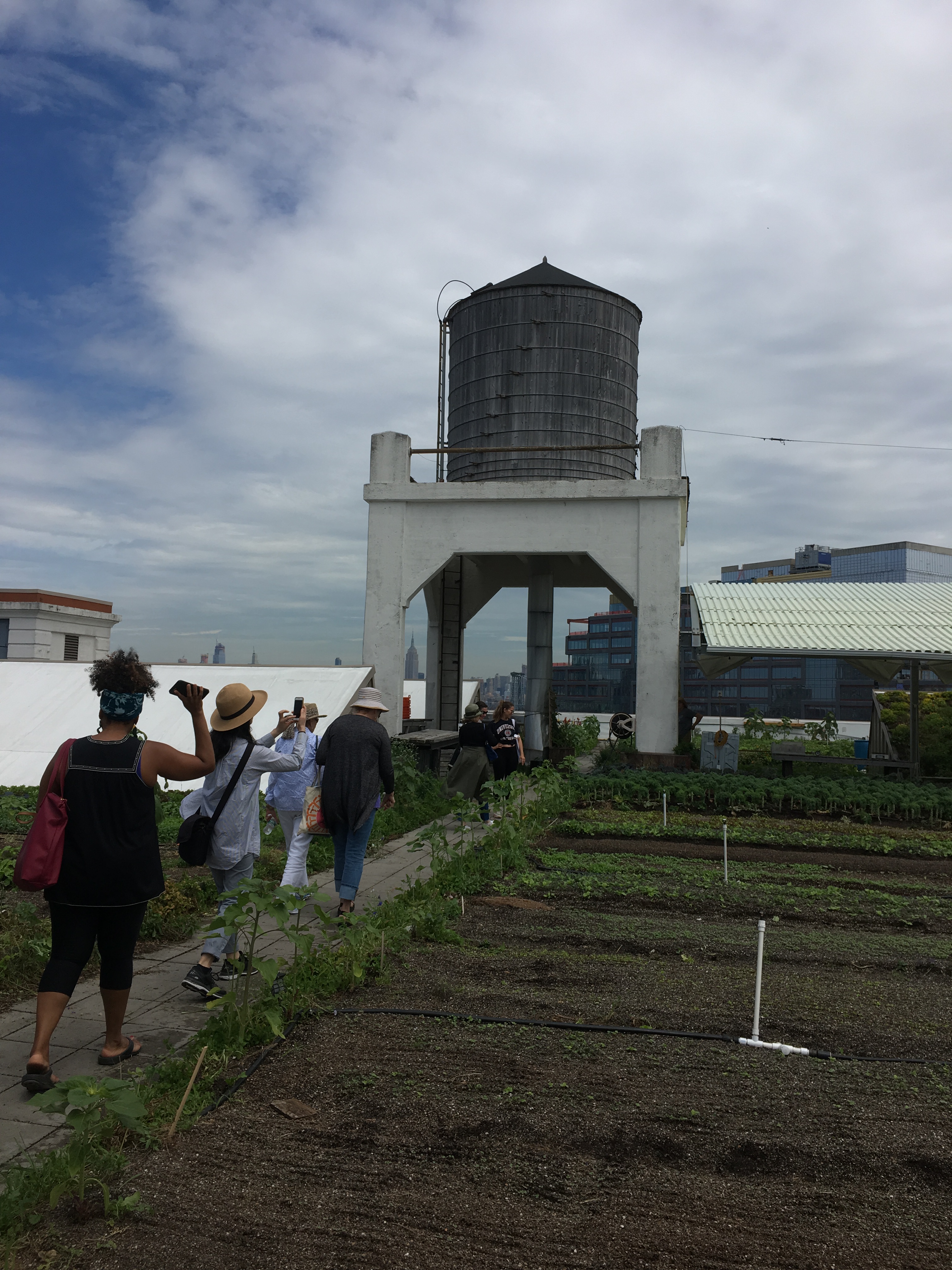
When we were at the Brooklyn Grange it was fascinating how they had flowers and pollinator plants all around the edge.
Borage and Phaceillia
Do you want to talk about Sunflowers, when we were at the Educator class at free the seeds you talked about the ants on sunflowers and how they help bring in beneficials and eat aphids?
Sunflowers
gets so will pollinated
seeds germinated on the ground, pull the ones they want, and eat some of those.
ants part of the cycle of life
sunflowers can grow really well here because they are native to North America
Maximillia
short branching sunflower
birds love it pollinators
any sunflower will grow in Montana soils.
When you plant a sunflower in a garden, if I had a farm I would plant pollinator borders
Branching sunflowers
one single flower. Some can have 20 blooms on a plant. You think there is a single flower, but there are actually 100s of tiny flowers in each bloom and they all need to get pollinated and they get pollinated by
- flies
- bees
- wasps
All kinds of stuff come to a sunflower that are beneficial
I might as well pollinate this other cucumber or plant that I am not necessarily attracted to but they think I might as well do this while I’m here.
The ants eat the aphid sack, can really really control the aphids in the sunflowers.
As the aphid is sucking the plant leaf juices it poohs out a sugary sack and the ants eat, they run on a pure sugar high in an aphid colony!
how to tell if you have aphid in any plant leaf,
look underneath
sparkly droplets
sugars
from their pooh
once those aphids are concentrated send off these signals, when they start having a colony build up, signals come off the aphids to these
black wasps
lady beetles
lacewings
things that predatize on them and they come in to start controlling the numbers of aphids
black wasp lays it’s embryo lives inside the aphid, so it kills it,
each female wasp, micro so they are tinier then a mosquito
can eradicate aphid explosion with these black wasps
but they don’t come in for just a few, if you only have a
handful
spray
soap on them then the numbers don’t get high enough
don’t get high enough to support, so the population will get high enough for the rest of the life cycle of these other insects to take place.
What about people bring in lady bugs to take care of the aphids?
The ants will try to attack the lady beetles, but if you don’t bring them in, mother nature is going to bring in this whole web of life just because you have the aphid colony. If we didn’t have the sunflower the aphid colony is going to be on the things you don’t want them on like,
- spinach
- peas
It’s not gonna hurt a sunflower the plant that is big
so many sugars moving
it just laughs at them, they are not hurting that sunflower
love kale
so by having sunflowers
just walk away
ignore the first wave
ignore them because if you don’t you’ve broken the cycle of life.
My other question is I am waiting for my sunflowers to bloom?! I planted them April 23 and they are still not even blooming yet?! I feel like the ones I planted after that like in June are even just about to bloom.
I like to watch the native plants, so when the native sunflowers sprout that’s when it’s time to plant.
I watch the soil temps and then kind of watch the native plants, and they tell me when.
Also, I wanted to ask in the beginning is this less expensive to start. Will this bring down a barrier of someone who wants to start since you don’t need a tractor.
Oh, yes it is this less expensive to start because you don’t need a tractor or is the no-till machine more expensive
yep!
you don’t even need them.
I’ve had several people sell their tillers
you don’t need it
Well, I might as well sell it.
Some people are like “I just bought the tiller!”
The best place to start to practice is to get some
cardboard
put some cow manure or compost
put a potato in it
cover with any leaves or straw and go away!
When you come back you will be ready to harvest potatoes! And that spot is ready for something else next spring, you won’t have weeds or grass.
potatoes are highly mycorrhizae!
It is the best thing going in the soil food web to protect
20 percent of the water the plant needs just because of the fungi association! Plus it’s a highway of communication. So outside of fungi circle, the plants might be saying
OMGOsh! I think it’s getting dry, so they send signals out saying you should be storing water.
that’s getting dry out
Hold up back up, wait, I am going to put a potato under the cardboard? The potato goes on top of the cardboard?
On top.You might have windy places you might have to use some rocks or sandy bags
Once that potato gets growing inside that cow manure or compost, it’s going to send it’s root system through the cardboard, it’s going to go down into the soil too and that’s where all these associations are going to take place because of the root!
roots
and glues
all go down through the cardboard and
mulch
holds everything there, so you don’t have to water
It will keep things moist
cooler
You won’t have any weeds, because the weeds need sunlight to germinate
can’t get any sunlight
When you disturb the soil, you are pulling up a new seed bank of seeds that mother nature has put down, so you need seed bank to protect that soil, she has put around for years, to protect that soil, because mother nature won’t tolerate open barren ground!
She wants plants growing on it so that seed is in the soil, so every time you till it you expose it to the sun you get weeds!
break that cycle of how not to get those weeds
weeds also come with the association
fungi and bacteria ratios
Once we do have a balanced food web, weeds don’t grow because they love the bacteria.
The other plants love bacteria food combination so you’re not even getting weeds to be part of the cycle.
I have 2 questions. So then can this get rid of noxious weeds? We have spotted knapweed outside my window in this one really dry spot here.
Spotted knapweed
Noxious weeds is a whole other ballgame because they come from a different food web then our soil food web.
They come from a different association, so from a different continent
taken it from one continent to a new continent, without it’s partners!
It’s a huge problem, because we need to bering in these partners that didn’t come would have kept it in check. It wouldn’t be a big problem, it could have been a beneficial plant in a different country because most noxious weeds have deep root systems. They are pulling up a lot of nutrients in their roots and leaf litter.
Many more permaculture type thinking people are thinking to cut it off before it blooms, because right before it blooms it has put all it’s energy into making the blooms, cut it off right before it happens, then just chop it up in place.
Then you are leaving all those nutrients, gathered up into it’s system on the ground.
When it regrows, do it again. You just keep doing that
You are then mining these nutrients, to the top of the soil for the other plants to use.
You are breaking up compaction.
So is this also for like dandelions in cities. Where people have like homeowners associations that say you have to have a yard free of the dandelions. Would it work for those too?
Dandelions are breaking up compaction and providing calcium to the system.
If they would do their job for them, if they relieve the compaction, they got their magnesium calcium ratio right in the ground with them chemistry then they wouldn’t have dandelions.
Agent Orange 2-4d
The dandelions is the messenger, is just the symptom of the problem, they are just telling the person you’ve got a problem, you just need to fix your compaction in your soil, but they don’t they just spray the weed that has 2-4d is just a chemical from Vietnam in Agent Orange, it is a defoliant that is highly toxic to people.
We are so comfortable with it, people don’t even read the label, we have lost our fear!
We are just using it, devastating to us and children’s health.
It’s one thing!
One practice we need to get out of society
GET OUT OF OUR
-
LAWNS!
-
football fields
-
golf courses!
It needs to go, for it to go!
We need to deal with the knowledge of how do we deal with the dandelions
so simple, we need to have some education
The Organic Lawn Care Manual: A Natural, Low-Maintenance System for a Beautiful, Safe Lawn
Paul Tukey has a great book out about it, he has actually put a natural lawn in Washington, DC!
He is one of the people who helped get the ban on 2-4d products for lawns/recreational use and in Canada. Has a lot of cities back east, using natural growing!
I’ve heard of him! Look I read his book this summer! My MOM’s awesome library!
Read the book!
I always feel reading a book is easier then watching a video!
I think people are either one or the other, I am a little bit of both.
OK, this is my other question. In our orchard where the grass has grown in around the tree… When Mike first planted them he had this big circle around them. But now the grass has grown back in. I want to say we planted the orchard around 2011.
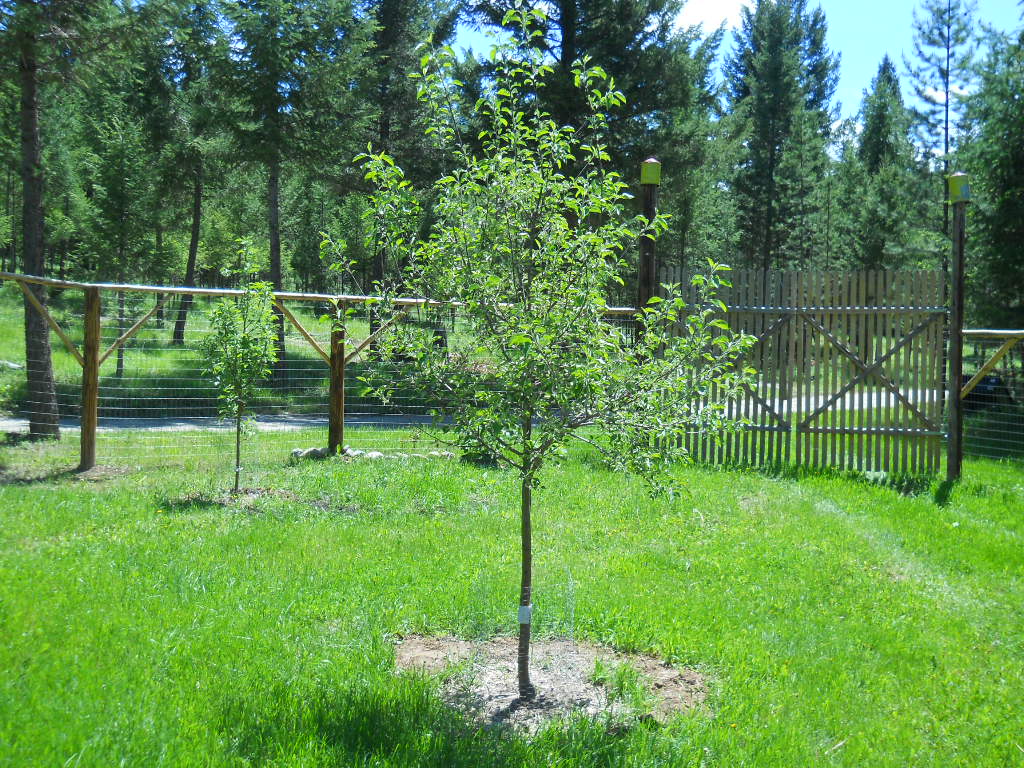
June 2012
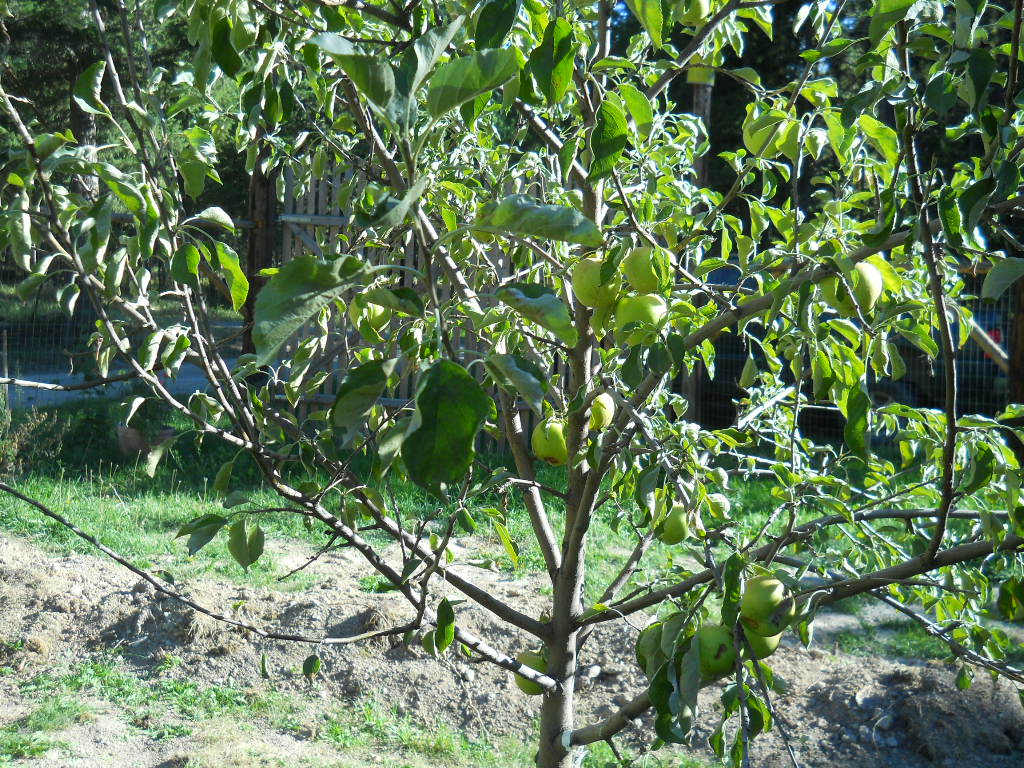
August • 2012
OK, this is my other question. In our orchard where the grass has grown in around the tree… When Mike first planted them he had this big circle around them. But now the grass has grown back in. I want to say we planted the orchard around 2011.

May 5, 2012. We planted the original plants on earth day and must have got a few more.

June 2012 these trees produced fruit a few months later…. August • 2012
August • 2012
if you could did that up you could imagine the roots would be huge.
I want to get rid of the quack grass that has grown in?
OK, quack grass needs to have competition, it can’t handle it when it has competition so you need to get other plants growing
clovers
blue grammar is a real short native grass that has a huge system that goes deep where they go 5-6 foot deep you would have to get a backhoe to mine it out of the ground!
I have a mix put together
I don’t have all the stuff… that’s what I would put underneath the orchard.
put into lawns
low mow lawn
WE HAVE TO ESTABLISH THIS HERE! Native GRASSES
if you don’t want to mow you probably don’t have to mow and you have to water to establish it but after it gets established you are not going to need to water
- same plants that are out in the
- used to the cold
- everything we have here.
their lawns are droughting out,
not plants for this environment
unless they’re watering almost daily, their plants are dying because of our conditions
lack of soil health
yarrow
is one I like having a fernie matt if you are going to grow it
great for beneficials
highly medicinal
I put it in the mix!
We have a lot of yarrow!
And we have a lot of mullein! I feel like it is growing where we have disturbed the earth once, I was wondering if that is a native plant or if it’s where he disturbs things with the backhoe where he was digging the root celler.
Mullen is a pioneer plant
means it comes first
huge leaves
making a lot of
it’s trying to make mulch for you
amending the soil for the next generation!
When people cut it off it’s a biannual
try to cut it off
It didn’t get to do what it’s supposed to do it’s job
leave it alone
it will kind of make a colony
micro seeds
has millions of them
let it do it’s job
flower stalk, before the bees are done with it
up the flower stalk
cut it off it’s making mature seed down that stalk, but cut it off it will put up these secondary flower blooms for the bees, cut those off and it will send off more flowers
Those leaves are useful
The Native Americans use the plant
for lots of purposes
tea out of it for congestion
I grow it for my naturopath and trade for services etc
comfrey and mullen
The rack is full of both plants, I get ready for her on her drying rack.
I always thoguht he mullen was for the root.
We use the leaves to make a tea
huge roots
improving the soil under the ground, try to pull it out
not gonna make the roots system
That’s a good way to tell what your system is like
pull a plant
micro
all the ban
- brassicas
- mustards
- brocoli
They don’t associate with microrize
most all pants do
any other plant
pull it up
if the root comes up out clean
no soil
HOMEMADE SOIL TEST
then you don’t have a good association
if it comes up and it looks like there is a wad of soil attached that looks like rasta farian dreadlocks you’ve got great food web. That soil is in good shape
don’t need a microscope just pull up a few roots and you can see what is going on!
We can go ahead and close this, I would close this by saying:
Every single person on the planet can do something positive towards soil health!
I would mulch it, I would probably put a second house plant with it
but you can do it up to a mega farm ~ from one plant up to 100 mega farm
doesn’t matter where you’re growing you can just use those principles!
And if you don’t even have a pot to go plant in
buy food that’s grown with these practices by asking your grocer!!!!
ask for organic food!
regenerative ag practices
once they start asking they will pay attention! Everybody in business for years is trying to find out what does the consumer want. They have millions of surveys, they want to know what consumers want so just
Tell them!!!!!
https://www.patreon.com/OrganicGardenerPodcast/creators

